Nature Is Rising
By John Palka — Posted April 16, 2023
A couple of years ago, prompted by the Easter Sunday that had just passed, I offered you a Rumination on the seasonal cycle of life on our Earth. This year, Easter Sunday has once again brought experiences and reflections that I would like to share with you. The weather pattern has been rather unusual over much of the world, and here in Minnesota it has resulted in a late arrival of spring. Accordingly, this year’s Rumination has a slightly different title—not Nature Has Risen, She Has Risen Indeed, but Nature Is Rising. Nevertheless, as she rises, what she reveals is much the same. And what most catches my eye is the birds!
NORTHERN CARDINALS (Cardinalis cardinalis, Family Cardinalidae)
Cardinals pair for life and the ones who live in southern Minnesota and neighboring regions also stay here all year round. However, they become extra conspicuous in the spring because the bright red males compete for territories and, in the process, they sing and display. Here is one in the woods just a few yards from our house.
MALLARD DUCKS (Anas platyrhynchos, Family Anatidae)
Some mallards migrate to warmer climes for the winter, some stay here in Minnesota. The ones that stay seek out open water. All the lakes and streams that I visit regularly freeze over, so I do not encounter these birds in winter. Seeing mallards, therefore, is one of the delights of spring for me.
Mallards form pairs, but those pairs only last for one breeding season. They are established very early, so by the time I become aware of the return of mallards to our local waters, most of them have paired already.
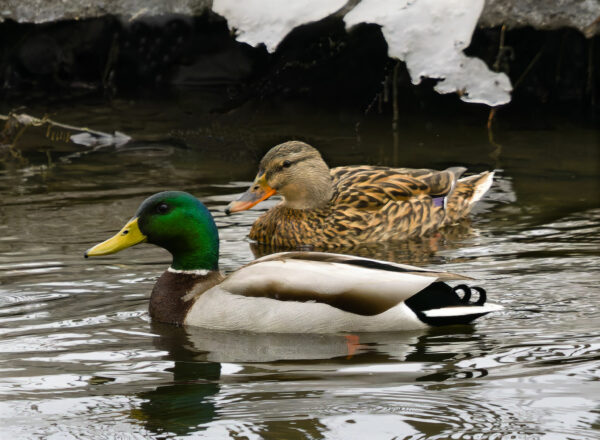
By Eastertime mallards have become abundant in the area, even in a cold year like this one.
HOODED MERGANSERS (Lophodytes cucullatus, Family Anatidae)
Another abundant local duck species is the hooded merganser. Unlike mallards, the great majority of these mergansers migrate far away to the southern states. When they return in the spring, they have mostly not formed their pairs yet. As a result, you often see pair formation in action—one male chasing another while a nearby female seems to ignore them both! After some time, the pairs stabilize.
On Easter Sunday, you could see all the variations. It is tempting to describe them using human terminology!
A seemingly unattached female.
RUDDY DUCKS (Oxyura jamaicensis, Family Anatidae)
Ruddy ducks do not reside here. They winter as far south as Mexico and Central America and breed west of the Great Plains, from northern Arizona and New Mexico all the way north to the southern Yukon. They migrate through the central and eastern states in the spring and the fall. Whenever they appear, they add wonderful color to the local waters. Here is a male on the day after Easter. You can see where the name arises!
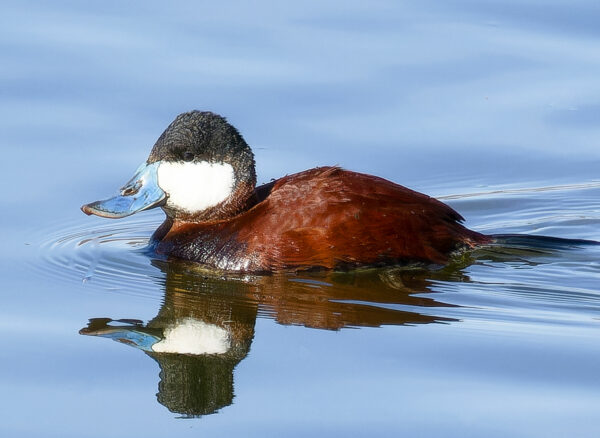
When you watch water birds paddle around, you easily see that they do not segregate sharply by species. It is common to see a mix of mallards, sea gulls, and Canada geese in a cluster, swimming alongside cormorants perched on rocks. In the picture below, male and female ruddy ducks swim casually alongside a male canvasback (Aythya valisneria, Family Anatidae).
PELICANS (Pelecanus erythrorhynchos, Family Pelecanidae)
The pelican is another migrant. Like the ruddy duck, the pelican winters as far south as Mexico and Central America. There it is found mostly along coastlines. It breeds throughout much of the central part of the United States and southern Canada but in only an estimated sixty colonies.
A flock of pelicans arrived in our parts just a few days ago. In the picture below, taken the day after Easter, the disc-like outgrowth on the bill signifies that this individual (males and females are pretty much indistinguishable) is in breeding condition. However, the flock will fly farther north to actually breed and lay eggs. In fact, the day after I took this photograph they were gone, searching for the next body of water in which to rest and fish.
GREAT BLUE HERONS (Ardes herodias, Family Ardeidae)
The spectacular great blue herons, too, migrate south for the winter; they are just coming back. The males arrive first, establish feeding territories, and court the arriving females. The two sexes look very much alike. The pairs bond very strongly but for only one season. They build their nests in large colonies, the males collecting the building materials while the females do the actual building by weaving the twigs and branches together.
I saw my first great blue heron the day before Easter. Presumably it was a male.
SANDHILL CRANES (Grus canadensis or Antigone canadensis, Family Gruidae)
Just as I was headed home after a second time in nature on Easter Sunday, I spotted what felt like a special gift—a pair of sandhill cranes, of which you see one here.
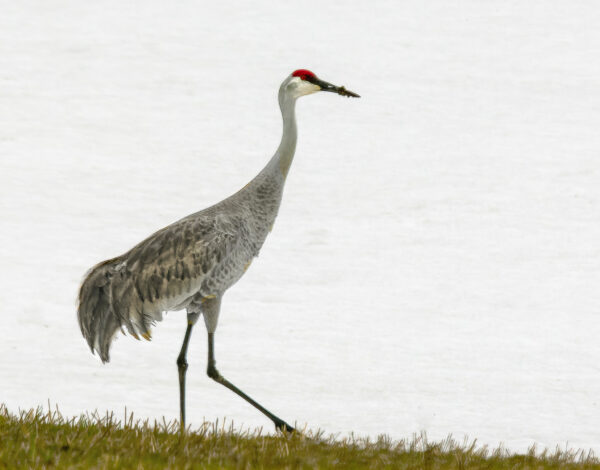
Sandhill cranes are spectacular birds, but what makes them special to me is something very different. It is the memory of a very early morning excursion that Yvonne and I made to watch sandhill cranes at Sherburne National Wildlife Refuge north of the Twin Cities. It was the last excursion that we made together before the tragic accident that took her life in November of 2019. Ever since then, these majestic birds have evoked in me a unique sense of wonder and gratitude.
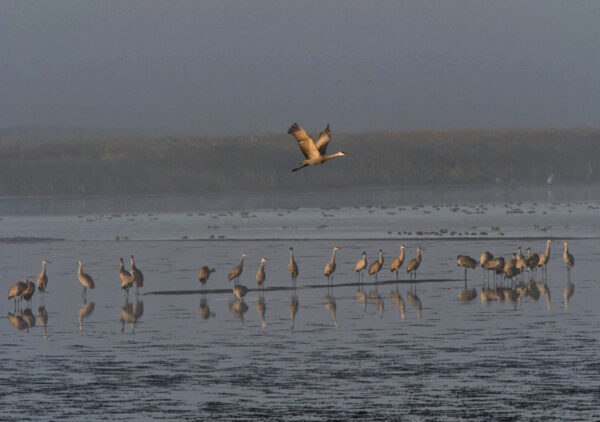
Like so many species, sandhill cranes winter in the south (especially in Florida, Texas, and northern Mexico) and breed in the north (across the northern United States and most of Canada). The migration route includes a stretch of the Platte River in Nebraska, where more than half a million birds congregate during a short period!
Sandhill cranes are among the species that mate for life. Their courtship dances are spectacular. They migrate as a pair. Both parents share in the care of the young. If one of the pair dies, however, the surviving partner will generally seek a new mate, either the same year or the next depending on when in the annual migration cycle the loss occurred.
As we learn more and more about Earth’s creatures, we are coming to realize that mating and the raising of offspring are not mechanical processes. Relationships entail emotions for other creatures, much as they do for us humans. If one sandhill crane dies, the other partner appears to mourn. How would an observant human know that a crane is mourning? Here is one specific account, not of a parent dying but of a chick (here termed a colt). The description is very detailed. It is up to us to sense what it means.
Here is a video that provides an excellent overview of the life history of sandhill cranes.
RED-WINGED BLACKBIRDS (Agelaius phoeniceus, Family Icteridae)
Red-winged blackbirds, too, go south for the winter. For some, coming from farther north, southern Minnesota is south, but most fly to the southern states. They start appearing again in our area in late winter or early spring. This year I started hearing them a couple of weeks ago, saw my first one on Easter Sunday, and got my first photographs a day later.
Red-winged blackbirds pair for only a season, and even that not entirely exclusively. Like the great blue herons, the males arrive first and compete for establishing territories. The desirability of the territory is an important factor in the choice of mate made by the later-arriving female.
The initial competition among males is accomplished by song and by wing display, which includes erecting the bright red and yellow feathers on the shoulders. Here is a male hard at work on the day after Easter.
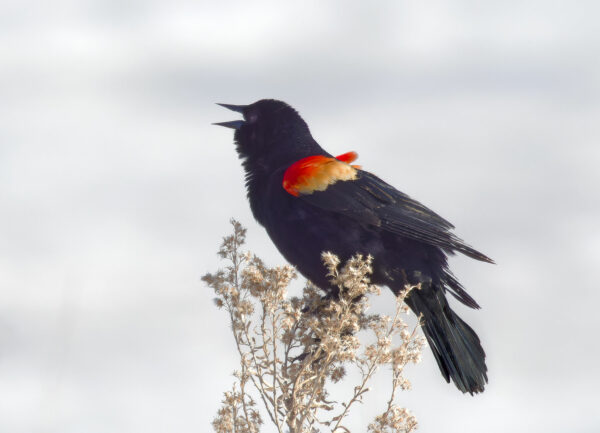
I have long associated red-wings with Easter. I know full well that when they first arrive, their displays and songs are manifestations of competition. Nevertheless, I respond to them far more according to the words of the wonderful hymn, Morning Has Broken, which I shared with you two years ago. Here, again, is the first stanza:
Morning has broken like the first morning
Blackbird has spoken like the first bird
Praise for the singing
Praise for the morning
Praise for them springing fresh from the world
Biology, yes. But praise, also yes!
CLOSING THOUGHTS
Some species of birds stay throughout the cold Minnesota winter. Which ones you see depends on where you look. For example, the turbulent water at the confluence of two rivers usually does not freeze, and this open water attracts a number of species including bald eagles.
And birds are far from being the only organisms around us. There are deer. There are squirrels, like this gray squirrel who posed for me on Easter Sunday.

There are beavers under the water. Fish abound under the ice of lakes. Turtles burrow deep into the mud, but they stay.
Sometimes we forget that the trees on which the squirrels scamper and the birds perch, and behind which the deer hide, are themselves living organisms. Trees don’t walk, and many of them drop their leaves during the winter, but they are alive and essential to our own lives. On the surface of the trees, and of many rocks, are lichens. Buried in the soil are the fungi, which not only give us tasty treats but on which the trees depend.
Since Easter Sunday, dragonflies have started to emerge. Damselflies and mosquitoes will follow soon. Their immature stages, or sometimes eggs, have been in the water since last fall. They have been hidden from our view, but they, too, are here right now, and they’re very much alive.
We are immersed in life, whether or not we are aware of it. This is just as true through the cold winter as it is in the balmy parts of the year. The celebrations of the vernal equinox and of Easter remind us of this in a beautiful way. Nature rises, she rises indeed. But Nature was always here. She never went away! It’s just that some of her children did, and they are now coming back!
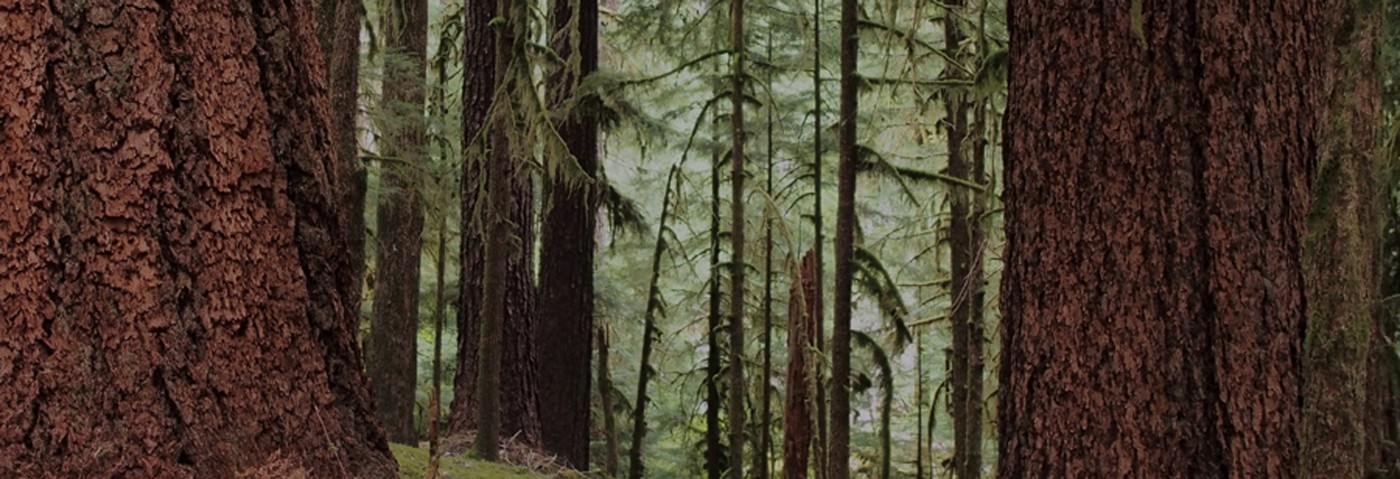
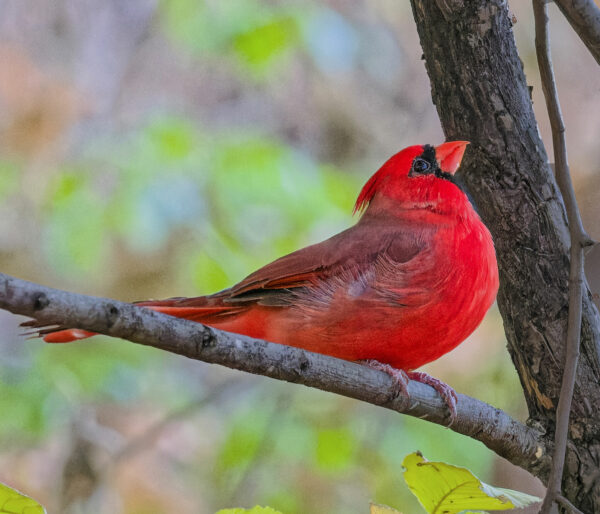
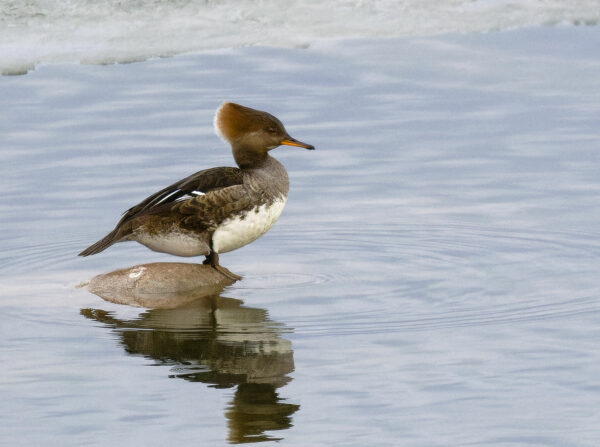
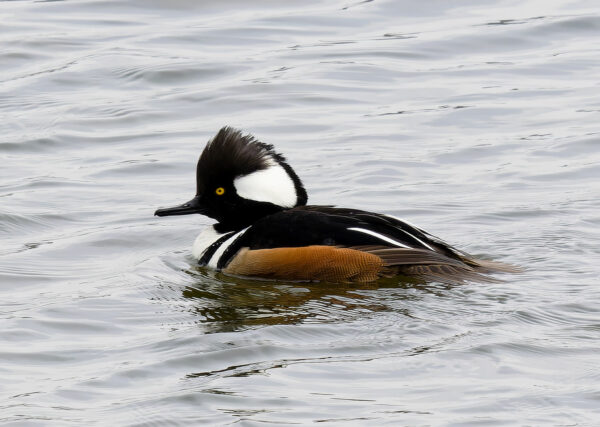
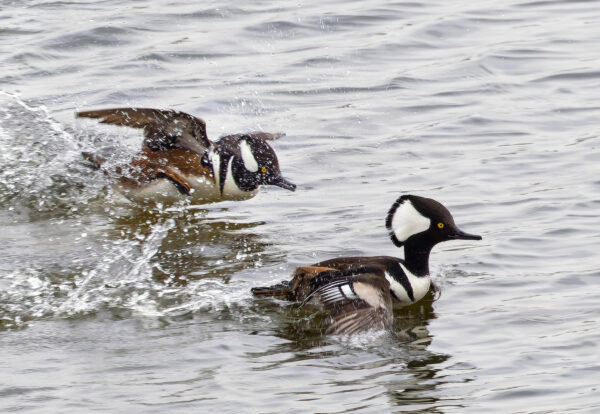

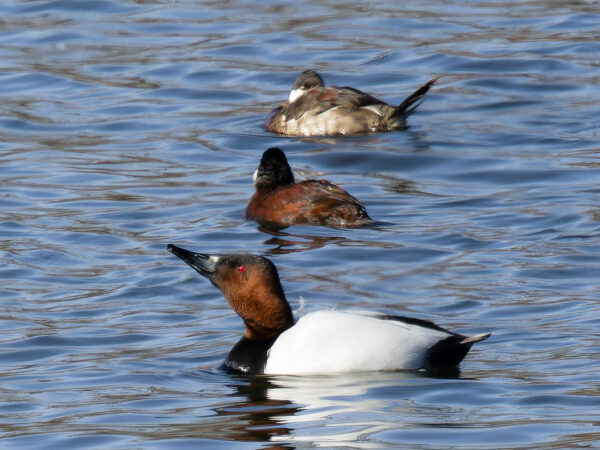
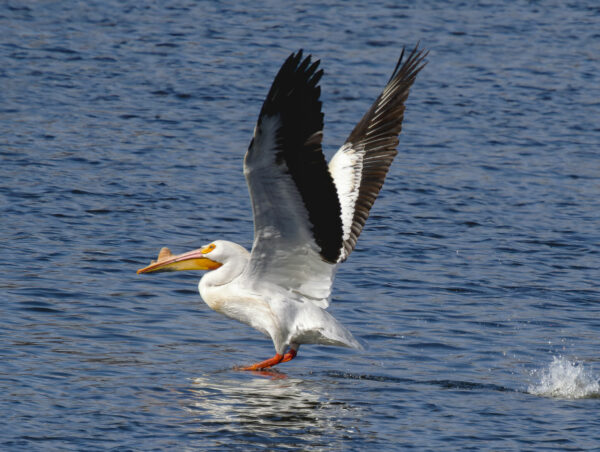

Beautiful writing, beautiful photos.
Thank you, Johnny.
Thank you, Michael. It was a true pleasure to put this together.
Beautiful – thank you!
Thank you, Sweetheart. I’m glad you saw it on your journey.
Thank you beautiful to take this journey with you. It heightens my awareness of the marvelous beauty all around us in the spring❣
Taking a journey together is a wonderful thing, isn’t it? I’m so glad that we’ve had so many chances to do that quite literally!
Nice details, beautifully written! I myself have been noticing some of these, but now I am learning..Johnny, you are a good teacher!
And I’m learning as well, Godan. You can be sure of that!
Beautiful birds.
They are, aren’t they. And the more you look, the more you find. Just in the last two days I have seen several species on a local lake that I have never seen before. I realized this only after I took their pictures and saw them in detail on my computer screen!
Thank you Johnny…as you see and bear witness, so we are given sight to the wonder around you. Each picture you paint of ‘nature rising’ and each photo you share of birds returning, bring such life and lift to the day. Ever grateful.
Thank you, Christie. It’s a wonderful world that we are a part of, isn’t it!
Another lovely post, Johnny. Birds bring such joy and depth to our lives – and laughter as well, with their spring antics!
Joy and depth is exactly right, Trileigh. Thank you.
Thank you Johnny, for this excursion into diversity and beauty. As always, told from a viewpoint of awe and curiosity, invoking my own. I find myself, here on the Orthodox Easter Sunday, contemplating the diversity and beauty of our human rituals and appearances, too.
Human rituals are wonderful things, Marc. The older I get, the more I appreciate them. In my experience, there is some sort of magical reciprocity between between soaking in the impact of rituals and appreciating the beauties of the world, especially the beauties of nature.
Johnny, not only are we blessed to see the natural world through the lens of your camera, you offer information which doubles my appreciation. Thank you, Effie
Thanks, Effie. Helping to increase the appreciation of, and a sense of connection with, the natural world was my goal when I started Nature’s Depths in 2015. I’m very happy to know that it has been working out that way for you.
Made my day, John! Beautiful both in the photography and the descriptions.
Thank you, Tom. Delight in what there is all around us is a wonderful feeling, isn’t it!
Thank you, Johnny! Amazing to see all of them on Easter. Would not have expected a pelican in Minnesota. I know our hummingbirds have returned within the past few days, but have not seen them at the feeder yet, The mason bees are all working hard, making their pollen balls while the going is good. Thanks again for taking us on this walk with you.
Every time I go out, Marten, I learn something new. I never expected to encounter pelicans in Minnesota either!
Thank you for sharing the birds of your spring. Glorious photos. The red cardinal is especially amazing to my eyes accustomed to Pacific northwest birds. Our spring has also been cool – we even had a light snowfall today. But we have started to see the return of spring birds. Our resident juncos now have more company in their tree and yard and at the feeder.
The cardinals are quite a sight indeed, especially early on when they are perched on bare trees and no other vibrant colors have appeared as yet!